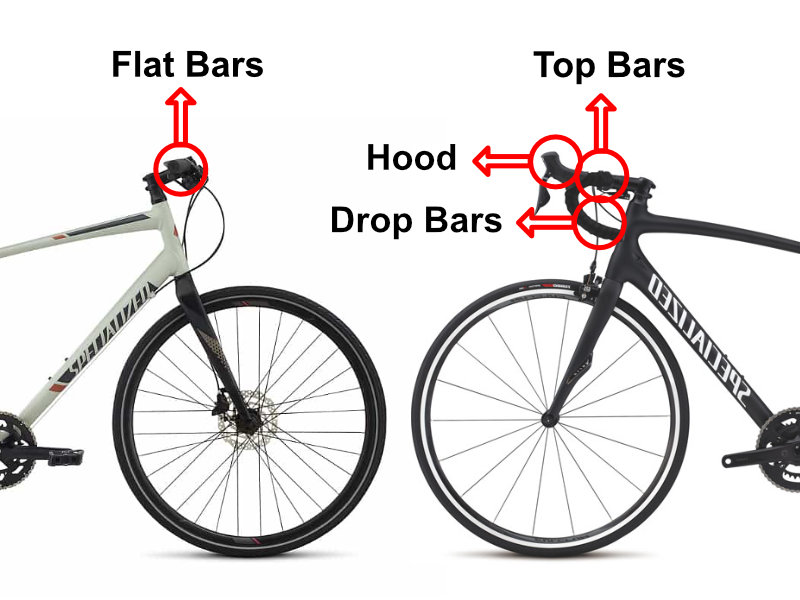Understanding Your Cycling Needs
When it comes to how to purchase a bike, understanding your cycling needs is crucial. This initial step will help you determine the right type of bike for your requirements, ensuring a comfortable and enjoyable ride. To get started, identify your cycling goals. Are you looking to commute to work, tackle rugged trails, or simply cruise around the neighborhood? Next, consider the terrain you’ll be riding on most often. Will it be smooth roads, rough trails, or a mix of both? Finally, think about how frequently you plan to ride. Will it be a daily commute or a weekend hobby? By answering these questions, you’ll be able to narrow down your options and find the ideal bike for your lifestyle.
Setting a Budget: How Much Should You Spend on a Bike?
When considering how to purchase a bike, setting a realistic budget is crucial. A bike can be a significant investment, and it’s essential to determine how much you’re willing to spend before starting your search. The budget will ultimately depend on several factors, including the quality of the bike, the brand, and the features you’re looking for. For instance, a high-end road bike with advanced gear systems and lightweight materials can cost upwards of $5,000. On the other hand, a basic hybrid bike for casual riding may cost around $200. To set a realistic budget, consider your cycling goals and needs. If you’re a serious cyclist, you may be willing to invest more in a high-quality bike. However, if you’re just starting out, a more affordable option may be the way to go. By setting a budget and sticking to it, you’ll be able to find a bike that meets your needs without breaking the bank.
Choosing the Right Bike Type: Road, Mountain, or Hybrid?
When it comes to how to purchase a bike, selecting the right type of bike is a crucial step. With so many options available, it’s essential to understand the differences between road, mountain, and hybrid bikes to make an informed decision. Road bikes are designed for speed and efficiency on paved roads, featuring skinny tires, drop handlebars, and a lightweight frame. They’re ideal for commuting, fitness riding, or competitive racing. Mountain bikes, on the other hand, are built for off-road adventures, with wide tires, suspension, and a sturdy frame to absorb shock. They’re perfect for trail riding, mountainous terrain, or rugged commutes. Hybrid bikes, as the name suggests, combine elements of both road and mountain bikes, offering a comfortable ride on paved roads and light trails. They’re great for casual riding, commuting, or fitness riding on mixed terrain. By understanding the unique features, advantages, and disadvantages of each type, you’ll be able to choose the right bike for your cycling needs and preferences.
Key Features to Consider: Gears, Brakes, and More
When learning how to purchase a bike, it’s essential to understand the key features that will make your riding experience comfortable, efficient, and enjoyable. One of the most critical components to consider is the gear system. There are several types of gear systems, including derailleur, internal, and single-speed. Derailleur systems offer a wide range of gears, while internal systems provide a more streamlined design. Single-speed bikes, on the other hand, are ideal for casual riding on flat terrain. Brake types are another crucial feature to consider. Rim brakes are the most common type, but disc brakes offer improved stopping power in wet conditions. Wheel size is also an important factor, with larger wheels providing a smoother ride and smaller wheels offering greater maneuverability. Suspension is another feature to consider, particularly for mountain bikes, as it helps absorb shock and improve control. Additionally, consider the material of the frame, the type of pedals, and the saddle design. By understanding these essential features, you’ll be able to find a bike that meets your specific needs and preferences, ensuring a comfortable and enjoyable ride.
Size Matters: Finding the Perfect Fit for Your Bike
When learning how to purchase a bike, finding a bike that fits comfortably is crucial for a safe and enjoyable ride. A bike that’s too small or too large can lead to discomfort, fatigue, and even injury. To ensure a perfect fit, it’s essential to consider your inseam and reach. Measure your inseam by standing against a wall with your feet shoulder-width apart, then measure the distance from the floor to the top of your inner thigh. This will give you an idea of the minimum saddle height required. Next, measure your reach by standing with your arms relaxed at your sides, then measuring the distance from your fingertips to your elbow. This will help you determine the ideal handlebar height. When trying out a bike, make sure to wear the same shoes and clothing you plan to wear while riding. Sit on the saddle and place your hands on the handlebars, ensuring your legs are almost fully extended and your arms are slightly bent. A bike that fits comfortably will allow you to ride efficiently and safely, making it an essential consideration when learning how to purchase a bike.
Where to Buy: Local Bike Shops, Online Retailers, or Directly from Manufacturers?
When learning how to purchase a bike, one of the most critical decisions is where to buy. There are several options to consider, each with its pros and cons. Local bike shops offer personalized service, expert advice, and the opportunity to test ride bikes before purchasing. They often provide maintenance and repair services, as well as accessories and upgrades. However, prices may be higher than online retailers, and the selection may be limited. Online retailers, on the other hand, offer a wider range of bikes and competitive pricing. They often provide customer reviews and ratings, helping you make an informed decision. However, you may not be able to test ride the bike before purchasing, and returns can be complicated. Buying directly from manufacturers can provide access to exclusive models and competitive pricing. However, you may not receive personalized service, and returns can be challenging. When deciding where to buy, consider factors such as price, convenience, and customer service. Research local bike shops, online retailers, and manufacturers to find the best option for your needs. By understanding the pros and cons of each option, you’ll be able to make an informed decision and find the perfect bike for your riding style, ensuring a successful and enjoyable how to purchase bike experience.
Test Ride and Inspect: Don’t Forget to Check the Bike’s Condition
When learning how to purchase a bike, it’s essential to test ride the bike before making a purchase. This allows you to assess the bike’s comfort, handling, and performance. Start by checking the bike’s saddle height and handlebar position to ensure a comfortable fit. Then, take the bike for a spin, paying attention to how it responds to your inputs, such as braking and gear shifting. A test ride will help you identify any issues with the bike’s performance, allowing you to make an informed decision. In addition to test riding, inspecting the bike’s condition is crucial. Check for any signs of wear and tear, such as scratches, dents, or worn-out tires. Inspect the brakes, gears, and suspension to ensure they are functioning properly. Also, check the bike’s frame and wheels for any signs of damage or corrosion. By test riding and inspecting the bike’s condition, you’ll be able to identify any potential issues and avoid purchasing a bike that may require costly repairs. This will ensure a successful and enjoyable how to purchase bike experience, allowing you to hit the roads or trails with confidence.
Warranty and Maintenance: What to Expect After the Purchase
After learning how to purchase a bike, it’s essential to understand the warranty and maintenance requirements for your new bike. A comprehensive warranty can provide peace of mind, covering repairs and replacements for parts and labor. Be sure to review the warranty terms, including the duration, coverage, and process for filing claims. Additionally, research the manufacturer’s maintenance recommendations, including the frequency of tune-ups, cleaning, and lubrication. Regular maintenance is crucial to ensure your bike remains in good condition, providing a safe and enjoyable riding experience. By understanding the warranty and maintenance requirements, you’ll be able to budget for future expenses and avoid costly repairs. Furthermore, a well-maintained bike will retain its value, making it easier to sell or trade-in when the time comes. When considering how to purchase a bike, don’t overlook the importance of warranty and maintenance. By doing so, you’ll be able to enjoy your new bike for years to come, exploring new roads and trails with confidence.






